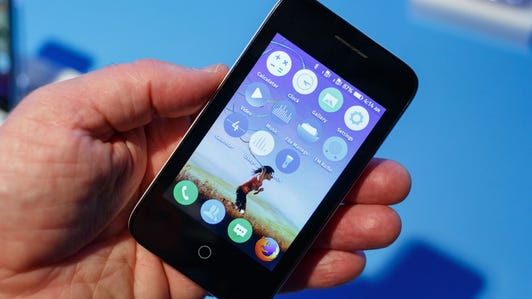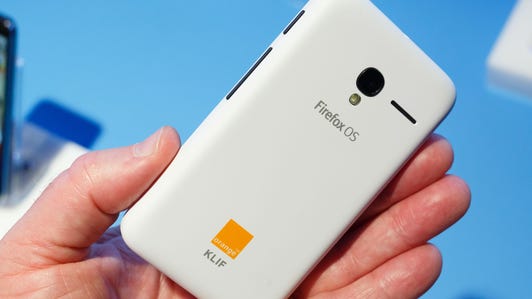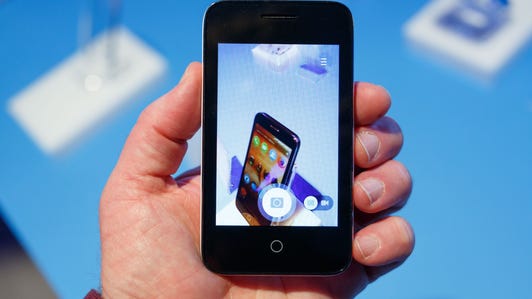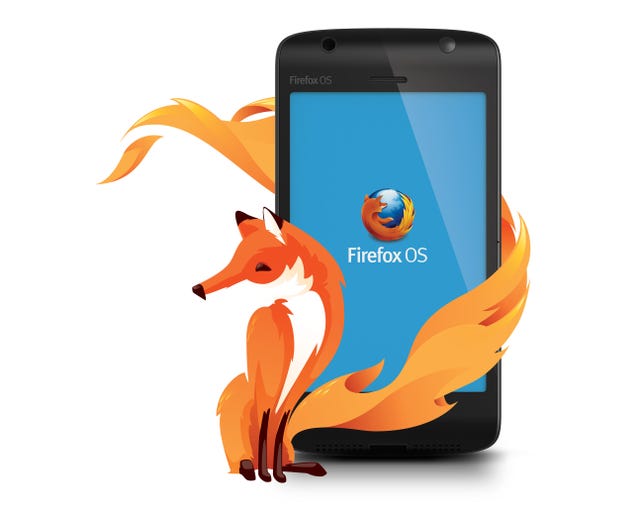
Mozilla
BARCELONA — Mozilla announced partnerships with Verizon Wireless and other carriers to bring phones running its Firefox OS to wealthy countries where the browser-based mobile operating system today is all but unknown.
The partnerships will mean Firefox OS phones in the United States, but Verizon isn’t the only partner. Others announced here at the Mobile World Conference show are Japanese carrier KDDI, South Korea’s LG U+ and Spain’s Telefonica, and the first phones from the deals are expected in 2016.
The partnerships are notable given that Firefox OS so far has largely competed in developing countries where smartphone penetration is relatively low and where Firefox OS’s low-end hardware needs can mean more affordable products. When Mozilla first announced Firefox OS two years ago, it listed Sprint as a partner and planned to reach the United States, but it backed off that plan after a few months.
Spreading into wealthy countries could help encourage more programmers to support Firefox OS. And that, in turn, could help Mozilla advance its Firefox OS mission: to break down some of the barriers that keep customers locked into the iOS or Android technologies. Success would mean Google and Apple app stores would cease being a gateway to software and content, that apps purchased once wouldn’t have to be purchased again if customers changed smartphone OSes, and that programmers could write an app just once with Web technologies that span not just iOS, Android, and Firefox OS, but also Windows Phone, BlackBerry OS, Tizen, Ubuntu and any other mobile operating system that arrives tomorrow.
Firefox OS has gradually spread to higher-end smartphones with the mainstream slab-of-glass touchscreen design, but many of the Firefox phones stemming from the new partnerships will embrace earlier phone designs that flip or slide open or that have hardware keyboards, said Mozilla Chief Technology Officer Andreas Gal.
“The operators see customer demand for these form factors. With Firefox OS we have the ability to actually serve that market,” Gal said. “You’ll see us broadening the categories we’re bringing Firefox OS to.”
The phones still won’t take on Android and iOS flagship devices head-on. They’ll be geared chiefly for entry-level customers upgrading from feature phones, Gal said. But those customers still want apps, fast mobile networks, and other modern features, he said.
“We see less and less competition in the entry-level segment with Android trending higher and higher in specs and Nokia Asha kind of disappearing,” Gal said.
Small share
Mozilla needs every ally it can muster to take on the giants of the smartphone OS market, Apple’s iOS and Google’s Android. The former is the foundation for an immensely profitable business, and the latter powers most of the smartphones shipped today.
Going by market share, Firefox OS hasn’t been a success, said Annette Zimmermann, research director for Gartner’s consumer markets and technology group. “In a 1.2 billion smartphone unit market in 2014, they only shipped a bit over 2 million units,” she said, and only a limited number of handset makers — chiefly ZTE, Huawei, and TCL’s Alcatel brand — have embraced the OS, though that’s changing with newer, bigger, higher-end models.
But what about progress with Mozilla’s broader ambitions, to infuse the mobile technology with the openness that prevails on the Web? “I don’t see any,” Zimmermann said.


Mozilla
Gal is patient, though.
“There are hundreds of millions of phones being sold every year — more than billion. It takes time to grow in that market,” Gal said.
Firefox OS phones are now available through 15 carriers in 30 countries, Gal said, and the Orange deal will increase that by another 13. Mozilla said that each month, about 3 million people visit its app store, the Firefox Marketplace, and download millions of apps.
And Mozilla’s initial low-end thrust — including a major new partnership with Orange to bring Firefox OS to 13 countries in the Middle East and Africa announced here — could be helpful in the longer run. Analyst firm GfK believes smartphone growth rates will slow in 2015 “due to developed markets reaching saturation point,” said analyst Kevin Walsh.
As a result, growth will shift to developing economies that buy cheaper phones. “We forecast emerging regions [will] drive growth in 2015 as smartphones further penetrate lower price points,” he said, chiefly those costing less than $100.
Developer recruitment troubles
A strong point of Firefox OS is that, since it’s a browser-based operating system, it can in principle just load a Web site or Web-based app. Even with iOS and Android apps a top developer priority, it’s important to have a presence on the Web, too.
In practice, though, making sure Web apps are tailored for the small screen and tested with Firefox OS is another matter. Take the view of Erez Pilosof, chief executive of Hop, a startup trying to remake the world of email with a text messaging-style interface. It’s currently developing a version of Hop for browsers on people’s PCs based on its users’ requests, Pilosof said. “We’ll consider porting the Web version to Firefox OS, but I must say we have lots of users and never received a request for Firefox OS,” he said.
Another pessimist is Rob McCarthy, technical advisor at Mobiquity, which develops mobile apps for a wide range of business clients.
“The only place we see Firefox going as a mobile OS is down-market, to people who can tolerate limited apps, less than ideal performance and low-end device quality,” he said. “The OS itself does not do enough to enable it to be cost- or feature-competitive to Android in any mature market. Without that competitiveness, it’s hard to see the value a developer can get out of Firefox OS in selling apps.”
KDDI’s high-end Firefox OS phone, the Fx0 (pictures)
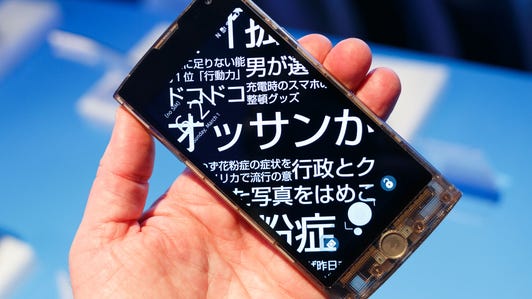





Even Mozilla’s Firefox OS partners say the app situation needs work. “We also want to see them develop the ecosystem,” said Jean-Marc Polga, Orange’s device program manager.
Web apps need better performance before they can run apps like Looksery, which analyzes faces in video to add special effects to people’s appearance, said Looksery CEO Victor Shaburov. “This will not run as HTML5 now,” he said. “Unfortunately we will not be able to support Firefox OS.” Mozilla is working to cater to developers like him and game authors, though, with a JavaScript-speeding technology called asm.js.
Undercutting Android, influencing iOS
Gal, though, looks at more criteria for success than just apps. He also considers influence on iOS and Android.
Those operating systems, he said, have followed Mozilla’s lead in advancing mobile Web technologies. “Today Android and iOS have more capabilities — they have accepted APIs [application programming interfaces] that we proposed,” Gal said. “The goal with Firefox OS is not just Firefox OS, but but make sure other OSes support the same APIs.”
And even though Google’s Android One program is bringing cheaper Android phones to developing countries, Firefox OS can undercut it.
“We heard back from vendors in India in particular that for them Firefox OS worked out better in sales numbers than Android One,” Gal said, with the competition costing three or four times as much.
Firefox OS is maturing, too, and Gal thinks that will change how it looks and works.
“We had in the beginning to catch up to things native ecosystems could do three or four years ago,” like Bluetooth or NFC radio communications. “The next step is less familiar territory — to use the unique advantages of the Web and expose them more to the user,” he said.
Specifically, that means making it easier to use software. With browsers today, you simply go to a Web page and it loads. There’s no app store searching, downloading and installing.
With the Web, “You don’t have to install something, you just experience it. When you go Amazon.com you don’t download something. We think that’s a more powerful experience than on iOS or Android,” and he hopes Firefox OS will apply some pressure toward openness because of it.
Orange Klif, Firefox OS’s $40 phone for Africa (pictures)
